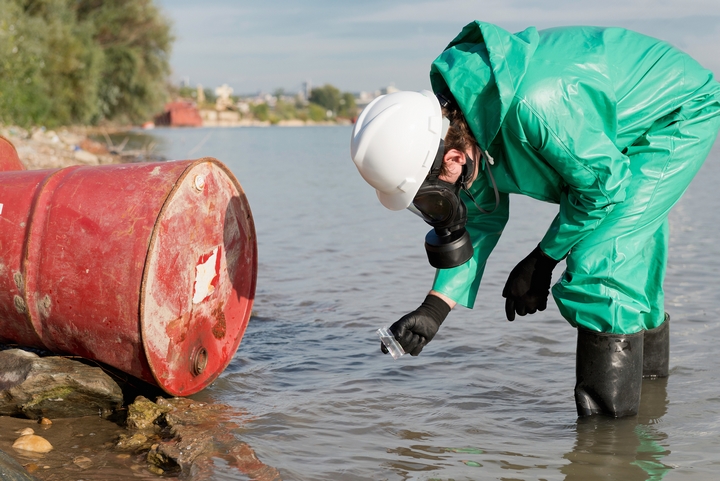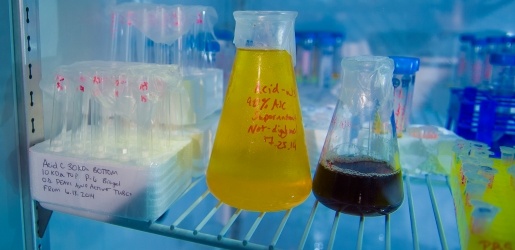Reliable Liquid Waste Disposal Melbourne: Safe and Effective Services
Reliable Liquid Waste Disposal Melbourne: Safe and Effective Services
Blog Article
Understanding the Comprehensive Refine of Fluid Garbage Disposal: Best Practices and Environmental Influence Considerations
The management of fluid waste disposal is a multifaceted concern that requires a thorough understanding of numerous best techniques and their linked ecological impacts. From the types of fluid waste produced to the techniques utilized for collection, treatment, and final disposal, each step plays a vital function in guarding environments and public health and wellness.
Types of Fluid Waste
Understanding the different sorts of liquid waste is important for efficient administration and disposal practices. Fluid waste can be generally classified into a number of types, each requiring special handling and therapy methods.
Industrial fluid waste frequently has hazardous products, including hefty steels, solvents, and chemicals, created throughout producing processes. These wastes necessitate stringent regulatory compliance to shield human health and wellness and the atmosphere. Domestic liquid waste primarily describes wastewater generated from houses, consisting of sewer and greywater, which, although much less harmful, can still position considerable risks if poorly managed.
Agricultural fluid waste, including drainage from farms, often consists of plant foods and chemicals that can cause ecological degradation otherwise dealt with properly. Clinical fluid waste, generated from health care facilities, consists of polluted liquids such as bodily fluids and chemicals, calling for specialized disposal methods to stop infection and ecological contamination.
Finally, oil and oil waste, normally generated by restaurants and auto sectors, can cause extreme obstructions in sewer systems otherwise handled appropriately. Understanding these classifications promotes targeted strategies for treatment, conformity with guidelines, and effective disposal approaches, inevitably advertising environmental sustainability and public health and wellness safety.

Collection Approaches
Efficient collection methods are vital for the correct administration of fluid waste, ensuring that it is gathered safely and efficiently before treatment or disposal. Numerous strategies are used relying on the type of liquid waste produced, the volume, and the specific features of the waste.
One usual approach is making use of devoted collection containers or sumps, which are created to capture liquid waste at the source. These systems frequently include pumps that facilitate the transfer of waste to larger storage containers or treatment centers. Furthermore, mobile collection systems equipped with vacuum innovation are employed in situations where waste is produced periodically or in hard-to-reach areas.
For commercial settings, closed-loop systems can efficiently lessen leakages and spills, allowing for the recovery and reuse of liquid waste. It is likewise important to train personnel on appropriate collection methods to mitigate dangers related to dangerous substances.
Additionally, executing normal upkeep timetables for collection equipment makes certain optimum performance and safety. The integration of innovative monitoring systems can improve collection efficiency by giving real-time information on waste levels and potential risks. On the whole, effective collection techniques are fundamental to lasting fluid waste management techniques.
Treatment Processes
Therapy procedures play a vital function in the monitoring of liquid waste, changing possibly dangerous materials right into risk-free effluents or reusable resources - liquid waste disposal. These procedures can be generally categorized right into physical, chemical, and biological techniques, each tailored to deal with certain impurities present in the waste stream
Physical therapy techniques, such as sedimentation and purification, work by getting rid of suspended solids and particulate matter. These techniques are commonly the primary step in the therapy chain, successfully reducing the load on subsequent processes. Chemical treatments entail making use of reagents to reduce the effects of damaging materials, precipitate hefty steels, or oxidize natural contaminants, thereby enhancing the safety and security of the effluent.
Organic therapy processes, consisting of triggered sludge systems and anaerobic food digestion, profit from the all-natural capabilities of microbes to degrade raw material. These techniques are especially reliable for wastewater including naturally degradable pollutants. Advanced treatment innovations, such as membrane layer filtering and progressed oxidation processes, are increasingly employed to accomplish greater degrees of filtration.
Integrating a mix of these therapy approaches not only guarantees conformity with governing standards but likewise promotes ecological sustainability by recovering valuable resources from fluid waste.
Disposal Options
How can organizations guarantee the accountable and risk-free disposal of liquid waste? Reliable disposal choices are crucial for securing public health and wellness and the atmosphere. The primary techniques consist of land disposal, incineration, and treatment complied with by discharge into local wastewater systems.
Land disposal entails the cautious control of fluid waste in designated landfills, ensuring that it does not leach right into bordering soil or water. Incineration, on the various other hand, topics liquid waste to high temperatures, converting it into ash and gases, which need correct purification to decrease discharges. This approach appropriates for contaminateds materials that can not be dealt with with conventional means.
In instances where fluid waste can be treated, companies might choose chemical or organic treatment procedures to neutralize damaging parts before releasing the treated effluent right into municipal systems. This path usually straightens with regulatory needs, making certain that the effluent fulfills safety and security criteria.
Eventually, companies should conduct extensive assessments of each Website disposal choice to determine its feasibility, taking into consideration factors such as waste structure, regulatory compliance, and prospective risks to health and the atmosphere. By picking proper disposal methods, companies can add to an accountable waste management technique.
Ecological Influence
The environmental impact of fluid waste disposal is a critical consideration for organizations seeking to decrease their ecological impact. Furthermore, the discharge of untreated or inadequately dealt with waste right into surface area waters can result in eutrophication, leading to oxygen exhaustion and the succeeding death of fish and other microorganisms.

To alleviate these impacts, companies must take on best methods such as carrying out rigorous waste treatment procedures, Continued promoting recycling and reuse, and sticking to regulatory criteria. By taking a positive approach to liquid waste management, entities can dramatically minimize their environmental impact while supporting sustainable advancement goals. Eventually, an extensive understanding of the ecological effects related to fluid garbage disposal is necessary for educated decision-making and accountable stewardship of natural deposits.
Verdict
Reliable monitoring of liquid waste is crucial for securing ecological stability and public health and wellness. By embracing best techniques in collection, disposal, and therapy, together with adherence to governing standards, the possibility for harmful contamination of environments can be considerably minimized. Constant innovations in technology and processes add to lasting waste administration initiatives. Eventually, a detailed understanding of liquid waste disposal use this link not just mitigates environmental effects but additionally fosters a dedication to responsible resource monitoring and ecological stewardship.
The monitoring of fluid waste disposal is a complex issue that requires a detailed understanding of various ideal methods and their associated environmental influences. From the kinds of fluid waste created to the approaches employed for collection, therapy, and final disposal, each action plays an important role in guarding ecological communities and public health.The environmental effect of fluid waste disposal is an important factor to consider for companies looking for to reduce their environmental footprint. Inevitably, a detailed understanding of the environmental impacts connected with liquid waste disposal is necessary for notified decision-making and responsible stewardship of all-natural resources.
Inevitably, a thorough understanding of liquid waste disposal not just reduces environmental influences yet also promotes a commitment to responsible source management and ecological stewardship.
Report this page